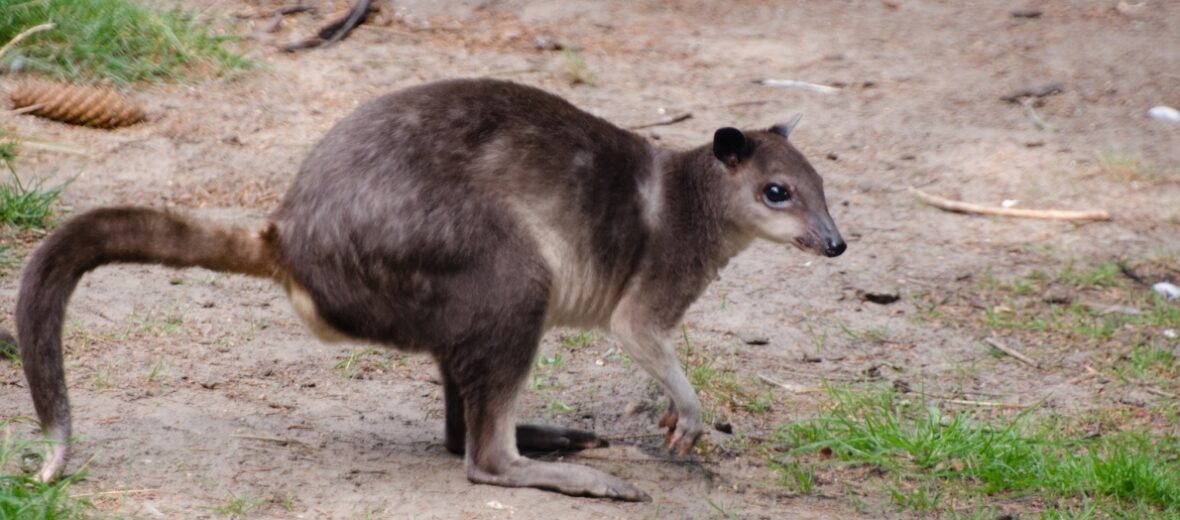
The white-striped dorcopsis, aka greater forest wallaby, is found in the northern part of West Papua, Papua New Guinea, and Indonesia. They prefer primary and secondary tropical forests. These marsupials (carry their young in an abdominal pouch, or marsupium) are related to kangaroos. The dorcopsis can be found at altitudes of up to 1,400 feet. Due to their stable numbers, they are listed as Least Concern by the IUCN.
First the Stats…
Scientific name: Dorcopsis hageni
Weight: Up to 7 lbs.
Length: Up to 23 inches, plus their 14.5 inch tail
Lifespan: Up to 14 years
Now on to the Facts!
1.) They use their powerful legs to kick predators and also in battling for a female.
2.) White-striped dorcopsis are omnivores (eat plant and animal matter), eating grasses, fruits, seeds, leaves, and insects.
3.) They are typically nocturnal (active at night), but can sometimes be crepuscular (active at dawn and dusk).
4.) Canines like foxes are the main predators of the wallaby, along with large reptiles such as crocodiles and snakes.
5.) A group of dorcopsis is called a mob, a troop, a court, or a herd.
But wait, there’s more on the white-striped dorcopsis!
6.) Males are promiscuous (mate with multiple females).
7.) Females birth 1 baby, called a joey. At any given time though, the doe may have up to 2 young.
Did you know…?
They can hop up to 30 mph!
8.) In what is known as embryonic diapause, the female can actually hold on to the male’s sperm for up to 2 years, till birthing conditions are optimal for a healthy joey.
9.) Mom also produces up to 2 different kinds of milk. This is distributed via teats to her young.
10.) When a they sense danger, they take up a frozen stance and then make foot thumps (usually only 1 or 2 beats) to warn others in its herd of a potential threat.
Now a Short White-Striped Dorcopsis Video!
Be sure to share & comment below! Also, check out the Critter Science YouTube channel. Videos added frequently!
Want to suggest a critter for me to write about? Let me know here.



